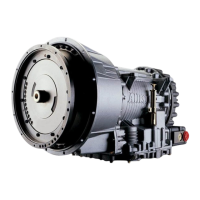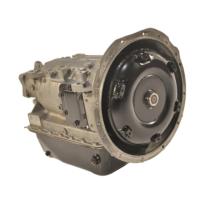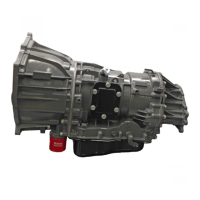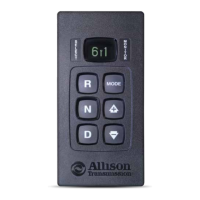Types of Retarder Control
(cont’d)
Type Description Amount of Application
Combinations of
the above
systems **
Auto “half-on”
plus pressure
switch *
Half capacity at closed throttle or
“Full On” with brake pressure
Auto “
1
/
3
on” plus
two pressure
switches *
1
/
3
, capacity at closed throttle or
2
/
3
and “Full On” with brake pressure
Hand lever plus
pressure switch *
6 levels of modulation with lever, or
“Full On” with brake pressure
Foot pedal plus
pressure switch
Full modulation with separate pedal,
or “Full On” with brake pressure
Hand lever plus
interface for
special pedal *
6 levels of modulation with lever, or 3
levels of modulation based on pedal
position
* These control systems may apply the retarder at high speed on grades when the vehicle has road
speed limiting and the retarder is enabled.
** For retarder apply systems integrated with the service brake system, the retarder is most effective
when applied with light brake pedal pressure for 1–2 seconds to allow the retarder to fully
charge. Added pedal pressure can be applied when more aggressive braking is desired.
NOTE: When the transmission fluid or engine water temperature
(engine water is an OEM option) exceeds programmed limits, retarder
capacity is automatically gradually reduced to minimize or avoid
possible system overheating.
Contact your vehicle manufacturer to understand how the retarder controls have
been integrated into your vehicle.
CAUTION: Observe the following cautions when driving a vehicle
equipped with a retarder:
• THE RETARDER WORKS ONLY WHEN THE ENGINE IS AT
CLOSED THROTTLE.
• OBSERVE TRANSMISSION AND ENGINE TEMPERATURE
LIMITS AT ALL TIMES. Select the lowest possible transmission
range to increase the cooling system capacity and total retardation
available.
• In the event of OVERHEATING, DECREASE THE USE OF THE
RETARDER; USE THE SERVICE BRAKES TO SLOW THE
VEHICLE.
• OBSERVE THE RETARDER/SUMP “OVERTEMP” LIGHT to be
sure it responds properly to retarder temperature.
40

